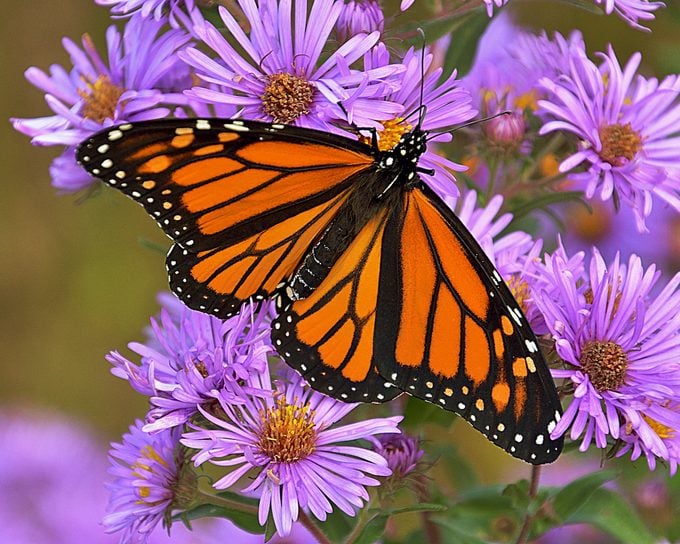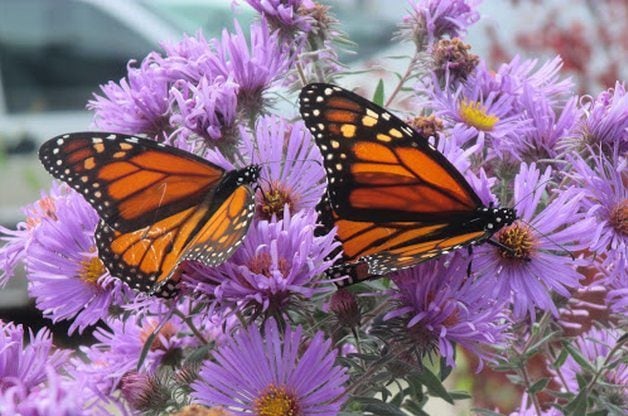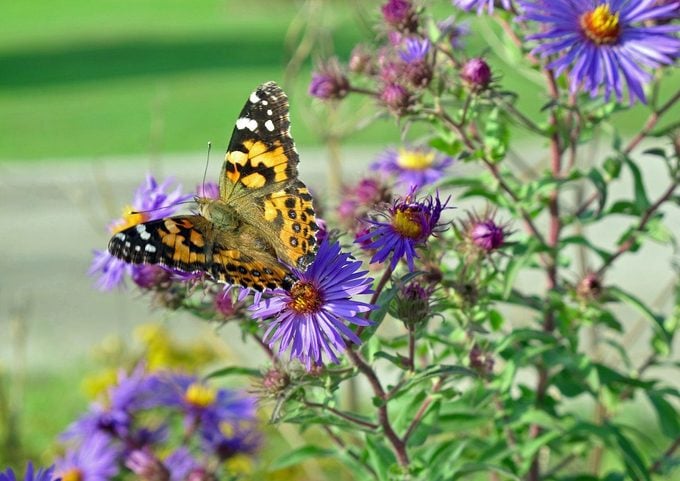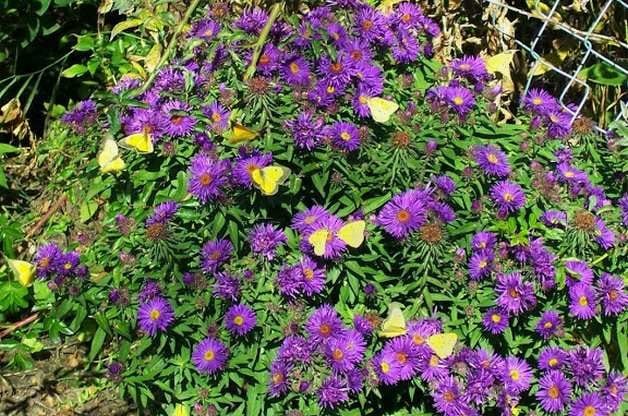Grow Aster Flowers to Attract Butterflies in Fall
Updated: Dec. 22, 2023
Late-blooming aster flower varieties will attract butterflies and bees to your garden throughout the end of summer and into fall.
Aster Flower Care

- Common name: Aster
- Botanical name: Aster or Symphyotrichum
- Zones: 3 to 8
- Moist soil
- Full sun
Asters burst into color and give your garden another wave of bright pigment just as early and midsummer bloomers begin to fade. Daisylike aster flowers come in many colors including blue, pink, purple, red and white.
These hardy, drought tolerant plants are easy to grow once established. From miniature alpine plants to giants that tower up to 6 feet, asters brighten any fall landscape. This is especially true when butterflies come to visit late in the season.
These pretty perennials make a great companion to mums. And they look especially lovely when mixed with other fall blooming plants, such as ironweed and goldenrod.
Psst—this is why you should not plant mums in fall.
Aster Flower Varieties

With more than 250 aster flower varieties, you’re bound to find a cultivar that’s suited to your space. The extensive range of sizes and colors available makes this plant one of the most popular late-season bloomers. To grow asters in containers, be sure to pick a variety that’s small enough to fit and pinch it back regularly.
Asters bear daisylike flowers that crowd the top of the stems, like New England aster (Symphyotrichum novae-angliae), or branch out to the sides like calico aster (Symphyotrichum lateriflorum).
Many native asters are available, including New York aster (Symphyotrichum novi-belgii), New England aster and climbing Carolina aster (Ampelaster carolinianus). They’re perfectly suited to the climate and growing conditions in their native ranges.
The aster shown above is a cultivar of New York aster, known as ‘Magic Purple’. It grows up to 5 feet tall under the right conditions and attracts late summer and fall butterflies in droves.
Attract butterflies with native Stokes’ aster.
Grow Asters for Butterflies

Nectar flowers are a little harder for pollinators to find in the fall. Asters provide a steady supply of nectar for your late-season butterflies and bees. Many aster flower varieties bloom during hummingbird migration in late summer and fall when other perennials are spent. Anyone who makes a special effort to attract butterflies in September and October with asters will likely to be rewarded with plenty of fluttering visitors.
Larvae of the pearl crescent butterfly, common east of the Rockies, feed on the leaves of native asters. The larvae of several other crescents and checkerspots and the wavy-lined emerald moth also enjoy aster plants.
Additionally, growing asters is a great way to to support migrating monarchs along their journey.
Aster Flower Names

In recent years, the New World asters, including our common native aster species, were renamed to separate them from their Old World cousins. Their Latin genus names changed from Aster to a variety of other genus names, including Symphyotrichum.
However, their common names remain the same. They are often still referred to by their former aster species names, as well. So don’t be surprised to see a variety of botanical names applied to these plants at the garden center. Regardless of their name, when it comes to attracting butterflies, they continue to be the same excellent nectar plants they’ve always been!
Next, learn how to grow shasta daisies in your garden.




















